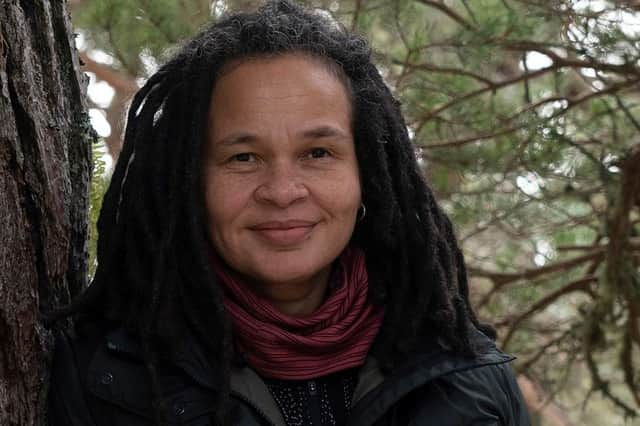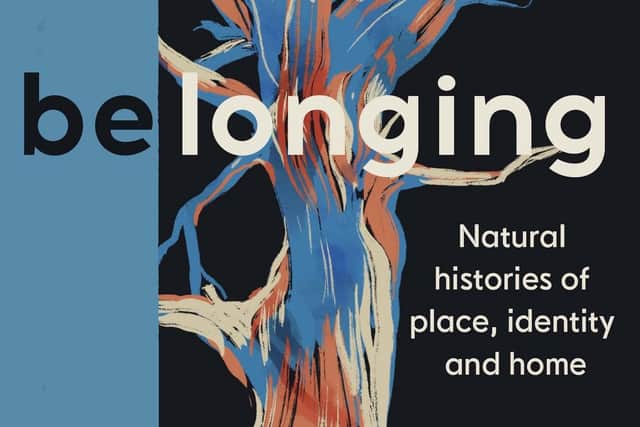Book review: Belonging, by Amanda Thomson


I think most sensible people would agree that there has been a drastic decline in biodiversity. One area where this does not quite hold true, however, is the burgeoning ecosystem of Scottish nature writing. A very rough piece of field-work yielded A Last Wild Place by Mike Tomkies, Field Notes from a Hidden City by Esther Woolfson, The Horizontal Oak by Polly Pullar, the anthology Antlers of Water, Native by Patrick Laurie, A Sky Full of Kites by Tom Bowser, The Unremembered Places by Patrick Baker, Sightlines by Kathleen Jamie, Illuminated by Water by Malachy Tallack, The Outrun by Amy Liptrot, Wild Winter by John Burns, The Fresh and the Salt by Ann Lingard, Island on the Edge by Anne Cholawo, A Scottish Wildlife Odyssey by Keith Broomfield… indubitably there are more. And that’s just Scotland: there are apex predators down south, like Macfarlane, Macdonald, Norbury, Barkham, Rebanks et al who make the occasional foray north.
In such a crowded environment it is important for creatures to find their niche. It is possible to find various sub-categories: books which deal with a particular species or a specific place; books which approach nature through the lens of grief or spirituality or loss or healing. Some are more politicised than others, some more contemplative and meditative. Some will use visual arts and others will be nuanced to literary precedents and other books on the topic. So where does Belonging carve out its distinctiveness?
Advertisement
Hide AdTo begin with, Amanda Thomson is an artist and filmmaker as well as a writer, and the book is subtitled “understories of nature, family and home”. The introduction does something bolder and sets out its stall in no uncertain terms. She is an intersectionalist (a rather cumbersome term) but spells out the centrality of identity to her artistic practice, describing herself as “ovo-lacto vegetarian / Black / female / Scottish / gay / civilly partnered”. I rather fear that some readers will immediately baulk at this, which would be a pity as there are both fine writing and interesting asides in the book. Indeed, the parts which deal explicitly with questions of identity are relatively few and far between. There is a sardonic moment late on the book where she almost undercuts her own agenda: “Once at a symposium, I had a conversation with someone who mentioned a conference on Black women artists, and my first thought was that my work – about birds and forests and trees – wasn’t about being a Black woman artist – though this is what I am, of course it is”. In terms of the experience of prejudice, she writes amusingly about being confused with Jackie Kay on several occasions; and is honest about fearing homophobia more than racism.


It is, however, encouraging that in terms of the relationship to place and to home, she never seems to have felt that she did not belong. There were crass questions – the classic “but where are you really from?” – but she is as comfortable being Scottish (or more precisely from Kilsyth) as she is being in the Ornithological Club or with the hillwalkers or on a CND march. That sense of nested rather than conflicting selves is salutary. The family history parts gain a lot from the admission of never really knowing the past.
Parts of the book build on her previous work, A Scottish Dictionary of Nature, providing words gleaned from Jamieson and Warrack’s dictionaries and covering meterological features, names for times of the day or year and suchlike. I am more ambivalent about these parts. In part it is because saying the words are unfamiliar or luscious or strange seems to make Scots into something exotic and other. I would reckon I knew the meanings of a great many of the words even if I don’t use them frequently, words and phrases like “hunt-the-gowk”, “gowk-storm”, “huntsman’s moon”, “Hogmanay”, “smirr”, “a hearkenin’ win’”. It is much more interesting when she gets onto other specialised vocabularies, such as the names of moths or fishing flies, or the technical terminology of etching (which I found the highlight of the book). The opening of the book is a consideration of the word “snag” – fractured deadwood – and perhaps fewer words explored more deeply would have been preferable.
At times the list-mania extends into the main text. Litanies of birds, for example, do not tell us too much about the birds; they are merely tagged or ticked off rather than evoked. In another section she rattles off events – carbon emissions, Black Lives Matter, Trump, Brexit, Covid, COP26 – which is fine except for a nagging feeling that we all experienced these. They happened to all of us, but what was your individual, unique response to them? These are, however, minor infractions rather than major flaws. On the whole, this is a passionate book and infused with a sense of rootedness. Thomson teaches at the Glasgow School of Art, long a centre for land art, and a future book on the highlights and pitfalls of land art would be more than welcome.
Belonging, by Amanda Thomson, Canongate, £14.99. Amanda Thomson is appearing at the Edinburgh International Book Festival on 16 August, www.edbookfest.co.uk